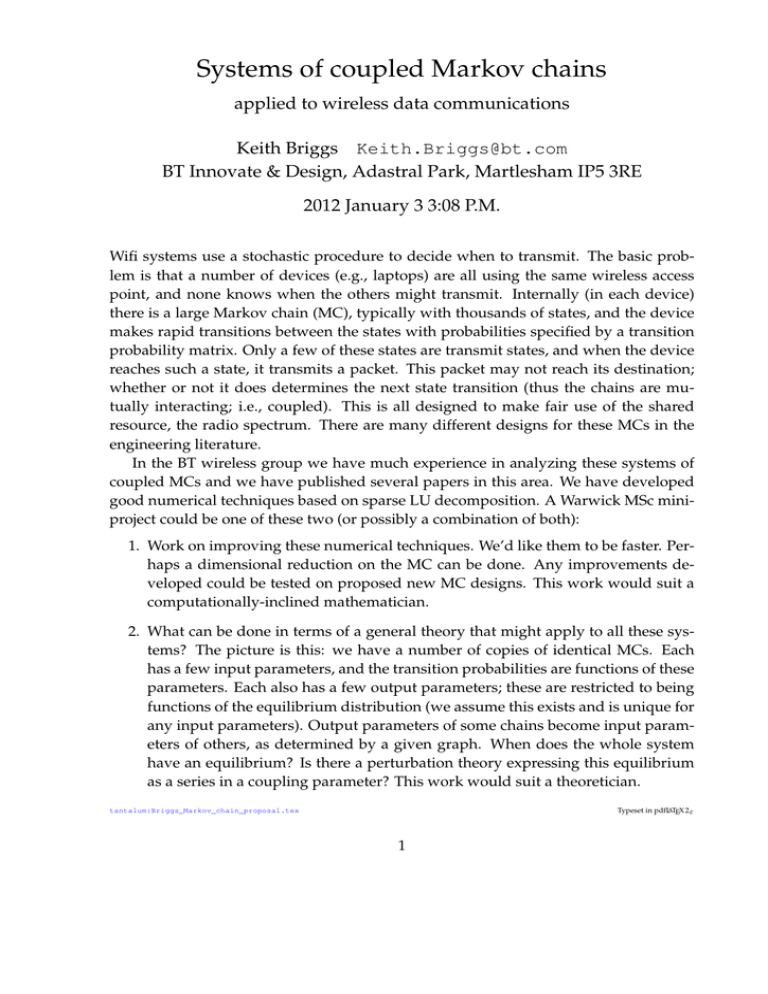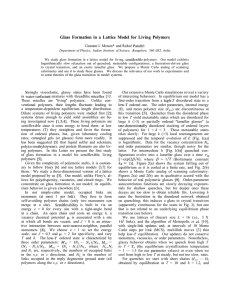Systems of coupled Markov chains
advertisement

Systems of coupled Markov chains applied to wireless data communications Keith Briggs Keith.Briggs@bt.com BT Innovate & Design, Adastral Park, Martlesham IP5 3RE 2012 January 3 3:08 P.M. Wifi systems use a stochastic procedure to decide when to transmit. The basic problem is that a number of devices (e.g., laptops) are all using the same wireless access point, and none knows when the others might transmit. Internally (in each device) there is a large Markov chain (MC), typically with thousands of states, and the device makes rapid transitions between the states with probabilities specified by a transition probability matrix. Only a few of these states are transmit states, and when the device reaches such a state, it transmits a packet. This packet may not reach its destination; whether or not it does determines the next state transition (thus the chains are mutually interacting; i.e., coupled). This is all designed to make fair use of the shared resource, the radio spectrum. There are many different designs for these MCs in the engineering literature. In the BT wireless group we have much experience in analyzing these systems of coupled MCs and we have published several papers in this area. We have developed good numerical techniques based on sparse LU decomposition. A Warwick MSc miniproject could be one of these two (or possibly a combination of both): 1. Work on improving these numerical techniques. We’d like them to be faster. Perhaps a dimensional reduction on the MC can be done. Any improvements developed could be tested on proposed new MC designs. This work would suit a computationally-inclined mathematician. 2. What can be done in terms of a general theory that might apply to all these systems? The picture is this: we have a number of copies of identical MCs. Each has a few input parameters, and the transition probabilities are functions of these parameters. Each also has a few output parameters; these are restricted to being functions of the equilibrium distribution (we assume this exists and is unique for any input parameters). Output parameters of some chains become input parameters of others, as determined by a given graph. When does the whole system have an equilibrium? Is there a perturbation theory expressing this equilibrium as a series in a coupling parameter? This work would suit a theoretician. Typeset in pdfLATEX 2ε tantalum:Briggs_Markov_chain_proposal.tex 1




